
Do you know where your data is?
A recent report from Gartner found that most law firms are missing almost half their data. Eighty percent of the intellectual property a firm handles is communicated with or stored via email.
What does this mean?
Attorneys in your firm are losing as much as six hours a week to document management.
Why document management is so challenging
An IDC whitepaper found knowledge workers wasted 11.2 hours a week sorting through document management (DMS) challenges. This whitepaper calculated the loss at $19,732 per knowledge worker, per year. A 21.3 percent loss in the firm’s total productivity.
What’s going on here?
Why is document management so challenging? Are there any storage or retention challenges making this difficult for attorneys?
As a matter of fact, there are.
1. Unable to find the documents you need
When documents are lost, there are typically no naming conventions or systematic processes in place. In a truly disorganized firm, each attorney creates their own system for naming files. As the IDC whitepaper shows, individual attorneys or paralegals lose approximately 2.3 three hours a week searching for files.
Searching, not finding.
When these documents aren’t found, firms typically waste another two hours requesting or tracking down files that are lost.
2. Recreating lost documents due to poor retention or version control
According to AIIM, 81 percent of law firms struggle with access – sharing information across multiple platforms. Most firms are struggling to find the documents they need.
What does this mean?
When documents are difficult to find, your team recreates them. When your team needs mobile access but that access isn’t available, they ask someone else to recreate them.
This complicates things further.
Which version is required for your client’s matter? Who has the right version? Is it you? Are you sure this is the right version? Do you have access to the right version?
See the problem?
An AIIM 2015 study found 25 percent of knowledge workers failed to comply with document management and retention policies. Non-compliance means retention and version control becomes extraordinarily difficult.
3. Documents have poor permissions and security
Your staff is sophisticated.
They’re aware of the benefits that come with cloud computing. They’re able to adapt to your firm’s document management system of choice. They’re familiar with cloud storage and they store their personal data in the cloud.
This is dangerous behavior.
A recent study found 70 percent of IT managers surveyed “know or believe that users have business data in their own personal file-sharing accounts.” Often times this isn’t malicious, it’s simply due to poor document management protocols.
This is the issue.
The ABA’s Model Rules of Professional Conduct 1.6: Confidentiality of Information (c) A lawyer shall make reasonable efforts to prevent the inadvertent or unauthorized disclosure of, or unauthorized access to, information relating to the representation of a client.
Files require permissions.
Your document management system should easily confirm or deny user access, something many organizations struggle to do.
Document retention shouldn’t be challenging
But it is for many firms.
Missing data, poor document retention policies, no version control. These are the issues that stem from a poor document management system.
Most firms are missing half their data.
They’re not sure what they have, where to find it or who has access to it. Document retention and storage doesn’t have to be difficult. It does need to be precise.
Most firms aren’t as precise as they could be.
As a result, they’re losing 11.2 hours per week or $19,732 per employee, per year. It’s an expensive decrease in productivity. How do you fix these problems? In my next article, we’ll discuss the solution to these common document management problems.

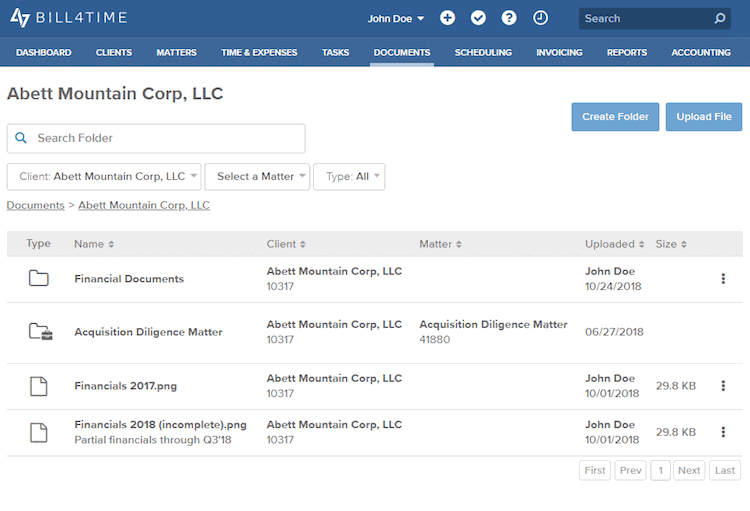
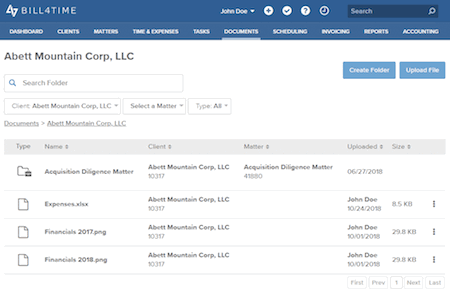
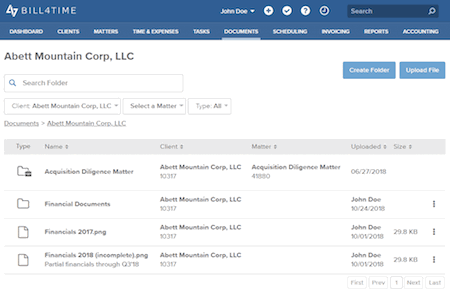 Whether you already have an established set of standards for organizing client files or are starting a new organization structure from scratch, customizable and nested folder creation allows you to organize yours and your client’s files in way that makes sense to your and your colleagues. Utilize the foundational, default structure or implement a customized set of conventions.
Whether you already have an established set of standards for organizing client files or are starting a new organization structure from scratch, customizable and nested folder creation allows you to organize yours and your client’s files in way that makes sense to your and your colleagues. Utilize the foundational, default structure or implement a customized set of conventions. 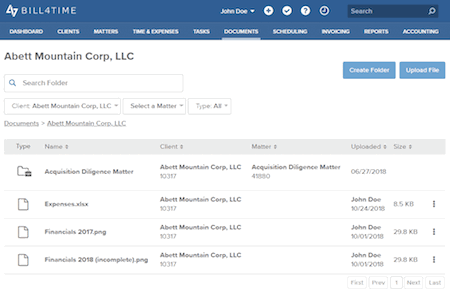 Take control of your file management with the ability to upload and download client files to specific folders at various levels of the file tree. Rename individual files to fit your firm’s naming conventions. Duplicate files for easy re-use before moving the file into the correct folder context.
Take control of your file management with the ability to upload and download client files to specific folders at various levels of the file tree. Rename individual files to fit your firm’s naming conventions. Duplicate files for easy re-use before moving the file into the correct folder context.
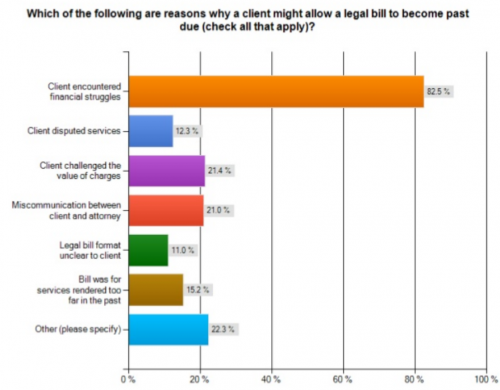

 Bill4Time product team releases new and enhanced features, system improvements, and bug fixes several times per week. Organized by month, the Release Notes blog series will highlight all the changes we’ve implemented, so you can easily stay up-to-date on what’s new. If you have a question, feedback, or an idea – please leave a comment below!
Bill4Time product team releases new and enhanced features, system improvements, and bug fixes several times per week. Organized by month, the Release Notes blog series will highlight all the changes we’ve implemented, so you can easily stay up-to-date on what’s new. If you have a question, feedback, or an idea – please leave a comment below! Thank you to Finances Online for including Bill4Time as a Top 3 Legal Practice Management Software, Top 10 Billing Software and awarding us the Great User Experience Award.
Thank you to Finances Online for including Bill4Time as a Top 3 Legal Practice Management Software, Top 10 Billing Software and awarding us the Great User Experience Award.